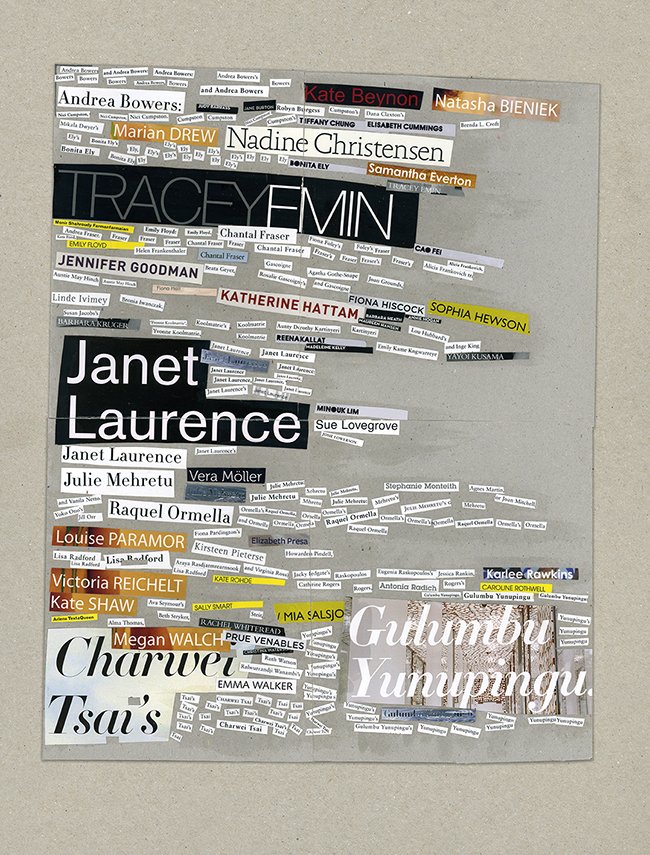Signature Style: The artist's name in the exposure economy of contemporary art
Elvis Richardson on the online research behind The CoUNTess report and the representation of female artists in Australian arts media. Read more.
Elvis Richardson on the online research behind The CoUNTess report and the representation of female artists in Australian arts media. Read more.

Image: Elvis Richardson, Art and Australia 2010 Women, 55 x 70cm, archival pigment print on Hahnmuhle Photo Rag, mounted on di-bond. Courtesy the artist.
When compiling data for The Countess Report we relied almost exclusively on information available online. So websites were crucial to the study. As an artist and researcher I viewed these online worlds as archival libraries and repositories of recent visual art history, both local and global. If I had conducted the study twenty or fifteen years ago there is no way I would have been able to achieve the national scope and detail of the information we were able to access .
When The Countess Report team collected data on institutions and galleries we approached it with the expectation that websites should provide full exhibition information. Mostly this wish was fulfilled but there were also many times that information on the websites only provided a headline, a trailer, or exhibition title, perhaps a curator’s name or one image. In these instances we contacted the gallery directly to request additional information. Not all approaches were successful.
Of course the intersecting purposes of a website for the institutions or commercial galleries is as a vehicle for brand recognition and publicity and the focus is on presenting core business such as the collection or artists represented in the gallery. Temporary museum exhibitions were most likely to name only a selection of artists from a larger group, and these names were often the artists used in promotional or educational material.
Any casual flick through a contemporaneous art magazine feels like you have just read a lot of artists’ names in big display type set in eye candy block colours, interrupted by a smattering of images and articles. The Countess Report essentially counted artists’ names. The names we counted were identified as artists because of the commercial or institutional framework of a gallery space or publication. But in the end all exhibitions are temporary, so it is ultimately when an artists’ name is in print that the imprimatur of success and ongoing importance are established. The newspaper or magazine review, article, monograph, catalogue; these are the objects our libraries collect. It is the printed format our academic institutions privilege and recognise as suitable receptacles for ‘research’.
Art media was the category in The Countess Report with the widest gender imbalance with state museums and commercial galleries coming a close second. Could the relationships between these entities also be reflecting each other to a certain degree? How does this lack of recognition in these establishment formats impact on the value and evaluation of work by women artists?
From my research into the gender imbalance issue, I believe some important questions need to be addressed. As we move from a print based into an online publishing age in both art and mass-media what is the reception, recognition, and value for an independent research and self-publishing online project like The Countess Report? What is the future of this online archive? Can we rely on it being there in 10 years? Do the institutions have a commitment to maintaining the veracity of their websites to represent their activities now and historically? How can websites be preserved? And how does the artist’s name operate in this exchange in achieving exposure and influencing future success?
Elvis Richardson, author of The Countess Report will be in residence at The Platform of Ideas - Artspace Sydney from the Tuesday 3rd - Saturday 7th May 2016. The public and interested parties are invited to meet with Elvis in this discussion space to share feedback and responses to the the study in person or online. More info available at countesses.blogspot.com. The Countess Report data is a resource available for future analysis and investigation. Countess invites researchers and scholars interested in working with the data to contact countesses@gmail.com